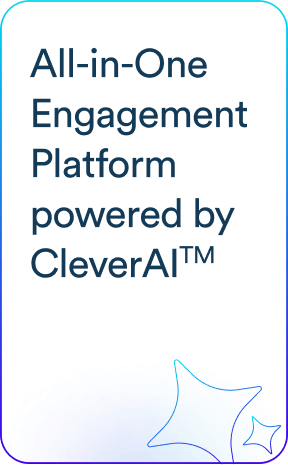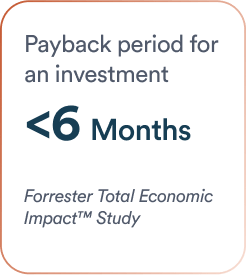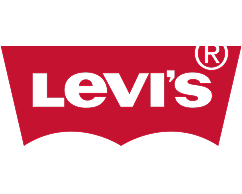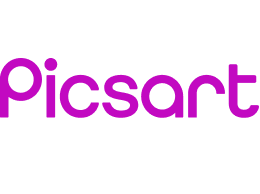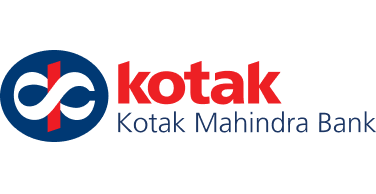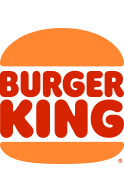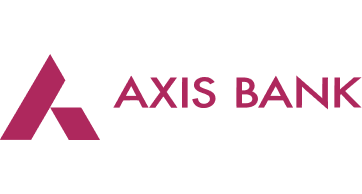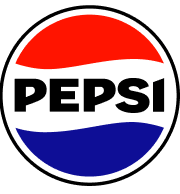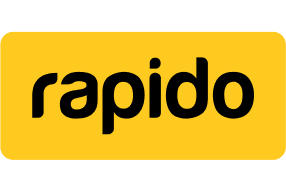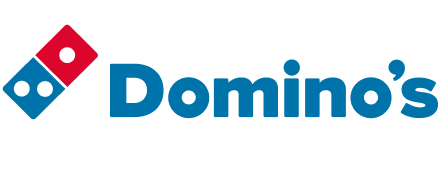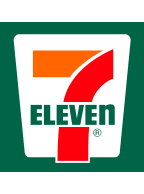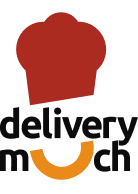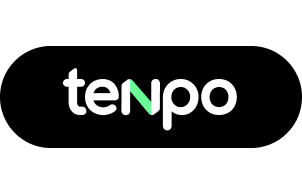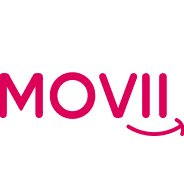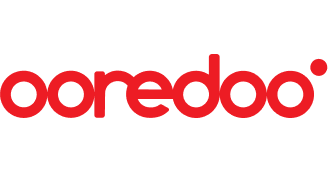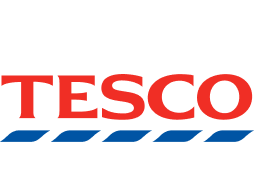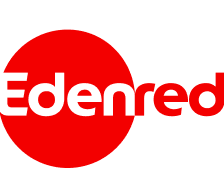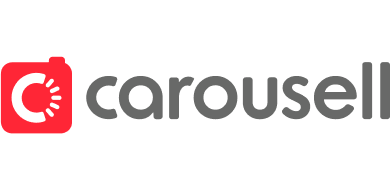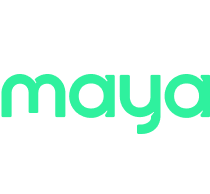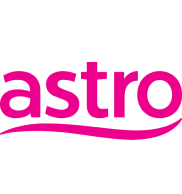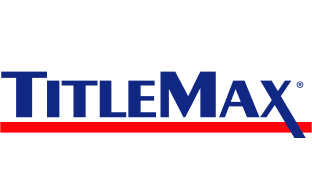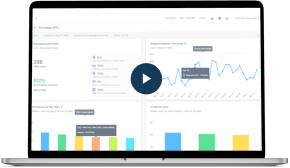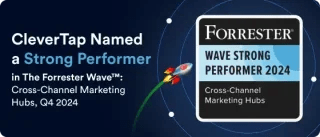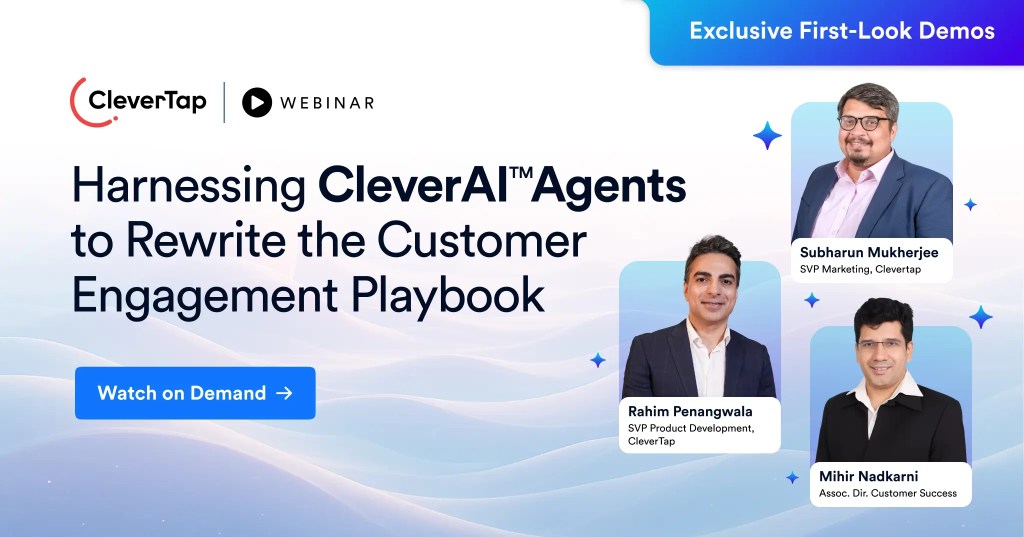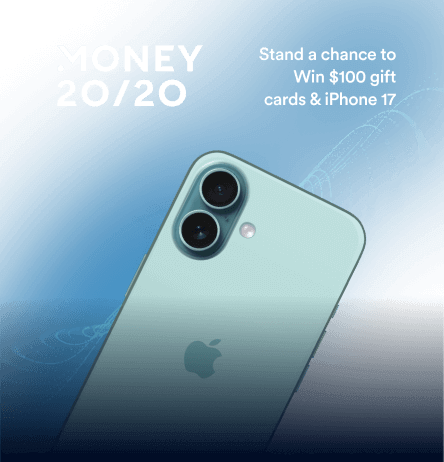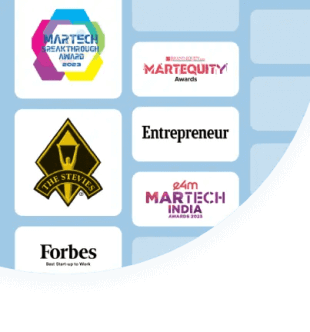The mobile gaming industry has exploded, with over 3.32 billion mobile gamers globally as of 2025. It remains one of the most competitive and lucrative segments in entertainment. But with this growth comes intense competition. Thousands of games flood the app stores every month, making discoverability a major hurdle for developers today.
Marketing in mobile gaming has matured. It’s no longer about isolated tactics or surface-level metrics. For game marketers, the real differentiators today are infrastructure, rapid experimentation, and the ability to translate behavioral signals into monetization and retention outcomes, at scale.
For leaders driving growth in mobile gaming, the question is not whether to optimize across the lifecycle, but how to build systems that do it continuously. With rising CPIs, the deprecation of IDFA, and increasingly complex player funnels, studios must go beyond static playbooks. Success now hinges on orchestrating cross-channel experiences, reacting in real time, and aligning every engagement with long-term value (LTV) goals.
This article outlines 12 advanced strategies grounded in what high-performing gaming teams are executing today. Each mobile game marketing tactic reflects the current edge, built for teams that are scaling, not just launching.
Why Is Game App Marketing Important?
Mobile game marketing refers to the strategies and tactics used to promote, acquire, engage, and retain players across a player’s lifecycle. It drives the visibility, engagement, and monetization needed for sustainable success. Here’s why it plays a defining role:
Market Saturation Is Real: With over 500,000 mobile games on iOS and Android, building a great product isn’t enough. Discoverability is a full-time effort. App Store Optimization (ASO), influencer partnerships, and community engagement are now essential pillars of every go-to-market strategy. Without early investment in visibility, many games fail before finding product-market fit.
User Acquisition Is Expensive: Cost-per-install (CPI) varies by genre, geography, and platform—and continues to climb. Studios in low-margin categories like hyper-casual face negative ROI unless they optimize every aspect of the funnel. Creative testing, channel diversification, and lifecycle optimization are now non-negotiable.
Monetization Pressure Is High: Most players expect free-to-play models, but revenue still needs to flow. Studios must balance monetization with player experience. In-app purchases (IAPs), rewarded ads, and subscriptions work best when personalized to player behavior and progress, not when they feel intrusive.
Retention Is Where Games Win or Lose: Getting a download is only half the battle. Poor onboarding, slow time-to-fun, or lack of engagement hooks can lead to early churn. Marketing must extend beyond acquisition to include structured onboarding flows, habit loops, and timely re-engagement strategies that build long-term loyalty.
LTV Unlocks Growth: The higher your customer lifetime value (LTV), the more aggressively you can invest in acquisition. High LTV gives studios breathing room to scale sustainably, reinvest in content, and compete with bigger players.
Data-Driven Marketing Is the New Standard: Growth teams must track real-time player behavior, run multivariate A/B tests, and personalize engagement across every channel. Modern marketers face growing headwinds—ad fatigue lowers campaign effectiveness, player attention is fragmented across dozens of competing apps, and privacy shifts like IDFA deprecation make it harder to track and target users. To stay ahead, gaming apps need a real-time, channel-agnostic marketing engine that adapts to user behavior, learns from performance, and delivers relevance at scale.
Without a sophisticated, full-funnel marketing engine behind your game, it’s nearly impossible to scale, retain users, or achieve sustainable profitability in today’s hypercompetitive app ecosystem.
12 Mobile Game Marketing Strategies and Tactics
Mobile game marketing requires a tactical blend of lifecycle thinking, personalization, and constant optimization. Below are 12 strategies used by some of the most successful mobile game studios to grow sustainably through smarter acquisition, deeper engagement, and higher LTV.
Grounded in lifecycle marketing, these strategies are shaped by hard-won lessons from mobile game campaigns—what worked, what didn’t, and how top studios adapted at each stage.
1. Encourage User-Generated Content (UGC)
Games like Minecraft and Roblox have demonstrated how player creativity fuels long-term retention. Make it easy for your users to share gameplay clips, create mods, or build custom levels. UGC not only increases engagement but also acts as organic promotion when players share their content on social channels.
2. Use a Free-to-Play Model with Smart IAP Mechanics
F2P is the default model today, but success hinges on thoughtful monetization. Avoid pay-to-win structures. Instead, trigger IAPs contextually, right after a player loses a level or completes a major milestone. CleverTap helps personalize these prompts using behavior data to improve average revenue per user (ARPU).
3. Optimize Your App Store Presence
Your App Store listing is your digital storefront. Prioritize A/B testing of app icons, feature graphics, and descriptions. Localize listings for high-potential regions. A strong ASO strategy improves organic discoverability and lowers paid acquisition costs.
4. Collaborate with Gaming Influencers and Streamers
Partnering with streamers who already have a dedicated fanbase in your game genre can dramatically boost early traction. For instance, RPG titles often see success when popular streamers post reaction videos or livestream walkthroughs. Choose influencers who align with your game’s tone, not just the biggest names.
5. Build Pre-Launch Hype
Create curiosity and anticipation before the game drops. Run teaser campaigns on social platforms, offer early access to Discord community members, and incentivize email sign-ups with exclusive in-game rewards. Hype builds velocity.
6. Launch Referral Programs with In-Game Incentives
Referrals work best when there’s something in it for both parties. Offer in-game currency, power-ups, or cosmetic upgrades to both the referrer and the new user. Track campaign performance using unique invite codes or URLs.
7. Leverage Discord, Reddit, and Niche Communities
Use these support channels as your high-value engagement zones. Host AMA sessions, collect feedback, and run community challenges. This gives players a sense of ownership and involvement, boosting retention and advocacy.
8. Run Playable Ads
Playable ads allow users to interact with a mini version of your game before downloading. This format typically delivers higher-quality users, those who already understand and enjoy your gameplay. It’s particularly effective for casual and hyper-casual games.
9. Deploy Geo-Targeted and Hyperlocal Creatives
Personalized ad creatives resonate better. During the Indian festival Diwali, use festive motifs for Indian audiences. During summer vacations, highlight leisure themes for U.S. users. Geo-targeting improves click-through rates (CTR) and reduces wasted impressions.
10. Organize Seasonal Events and Time-Limited Content
Content freshness drives re-engagement. Plan thematic campaigns, like Halloween hunts or Christmas treasure chests, that run for a limited time. Add exclusive rewards to enforce FOMO marketing and increase session frequency.
11. Re-Engage with Behavior-Based Push Notifications
Push notifications work best when personalized and well-timed. If a user hasn’t completed onboarding, send a gentle nudge. If they missed an in-game event, remind them with a value-driven prompt by using tools like CleverTap’s push notification platform.
12. Continuously A/B Test Everything
Don’t set and forget your creatives or messaging. Test different variations of store descriptions, onboarding tutorials, or win-back messages. Even a 5% boost in conversion rate at one stage can compound across the funnel.
How to Create an Effective Mobile Game Marketing Plan
Creating a successful mobile game is only half the battle. Getting it in front of the right users and keeping them there is where marketing makes its impact. Here’s how advanced studios structure their game marketing plans:
Define Your Audience: Understanding who you’re building for goes beyond basic customer demographics. Ask deeper questions: Are you targeting competitive players who thrive on PvP battles? Casual players seeking quick dopamine hits between tasks? Or narrative-first gamers who spend hours immersed in RPGs?
Use historical data, in-app behavior, and market research to build detailed gamer personas. Then apply advanced customer segmentation to tailor messaging, offers, and gameplay experiences based on variables like play style, session frequency, skill progression, or monetization potential. The more precisely you define your audience, the more effectively you can engage, retain, and convert them.
Drive higher retention with CleverTap’s advanced player segmentation.
Understand Your Game Type: Different genres require different strategies. Hyper-casual games rely on virality and fast UA loops, while mid-core and strategy games demand deeper app onboarding and loyalty loops. Knowing your game’s DNA helps align your marketing and monetization strategies.
Set SMART Goals: Be specific. Don’t just aim for “more installs.” Define clear, measurable outcomes tied to your business model and lifecycle stage. For example, target a 15% uplift in Day 7 retention or reduce cost-per-install (CPI) by 20% over the next 3 months. If your game relies on ad monetization, optimize for Daily Active Users (DAU). If your revenue comes primarily from in-app purchases, focus on increasing Average Revenue Per User (ARPU). Anchor each goal to a phase of your lifecycle, including building pre-launch momentum, ensuring a successful launch, or driving long-term retention.
Plan Budget, and Channels Around the Full Lifecycle: High-performing gaming teams don’t just spend, they invest based on lifecycle goals. Allocate budget strategically across pre-launch, launch, and post-launch phases, while keeping room for experimentation and real-time optimization.
- Pre-launch: Focus on market testing, community seeding, closed beta feedback, and building early hype through teaser campaigns. This is where you lay the foundation for retention by setting expectations and collecting behavioral signals from early cohorts. Channels include waitlists, social pre-launch content, influencer seeding, and early access exclusives.
- Launch: Align paid UA, influencer partnerships, referral programs, and App Store Optimization to drive top-of-funnel momentum. Lifecycle messaging should be prepared ahead of launch to guide new users into habit loops through progressive rewards, onboarding missions, and social incentives. This is also when A/B testing velocity should be at its peak.
- Post-launch: Shift focus to retention, monetization, and churn prevention. Deploy push, email, and in-app messaging to reinforce behavior and re-engage lapsed users. Run LiveOps campaigns to keep content fresh and reward loops active. Build upsell flows based on behavioral segmentation, such as offering high-value bundles to engaged spenders or incentivized IAP unlocks after specific milestones. Continue optimizing channel mix based on LTV signals.
At each phase, messaging must align with where the player is in their journey. Strong retention loops, timely nudges, and adaptive monetization flows are what separate top-grossing games from the rest.
Key Metrics to Track and Why They Matter
A strong mobile game marketing strategy is only as good as its measurement framework. Metrics reveal whether your strategies are paying off, and where to optimize. Here’s a breakdown of the most important metrics every mobile game studio should track:
| Metric Category | Metric | Why It Matters |
| Acquisition | Installs, CPI, ROAS | Measures UA efficiency and install quality |
| Engagement | DAU, MAU, session time | Gauges stickiness and value |
| Retention | Day 1, 7, 30 rates | Indicates onboarding success and gameplay value |
| Monetization | ARPU, LTV, IAP rate | Ties to revenue and reinvestment capacity |
| Feedback | Ratings, Reviews, NPS | Highlights CX issues, sentiment |
Best Practices for Effective Mobile Game Marketing
Tactics alone won’t win the race. A long-term strategy rooted in user insight, experimentation, and iteration is what moves the needle. Top-performing marketing teams build on a foundation that prioritizes user experience, enables agility, and scales what works. Here are the key game marketing best practices that set high-growth gaming studios apart.
Streamline Onboarding for Early Engagement
Your first-time user experience (FTUE) sets the tone for retention. Remove unnecessary roadblocks like long sign-up forms or excessive permissions. Use contextual walkthroughs to guide players through the first critical minutes. Let them experience core gameplay before introducing monetization or complex features. Platforms like CleverTap allow marketers to personalize these flows dynamically, based on where players drop off or engage most.
Boost Day 1 retention with personalized onboarding journeys using CleverTap.
Refresh Creative Assets Frequently
Campaign creatives burn out fast, especially in mobile gaming, where attention spans are short and competition is high. Rotate static and video assets regularly across channels. A/B test ad formats, CTAs, and visual styles. Sync creative refreshes with new game updates or seasonal events to keep messaging aligned. Well-timed creative variation prevents user fatigue and improves ROI across performance campaigns.
Personalize Outreach Based on Behavioral Data
Use event-based segmentation to bucket users by in-game behavior, frequency, device type, or spend history. Then, build targeted push, email, or in-app journeys that speak to their preferences and milestones. For example, encourage a lapsed user to return with an exclusive offer or nudge a high-value player toward an IAP bundle. Personalization drives both conversion and retention.
Test and Optimize Journeys Regularly
Every journey, onboarding, upsell, and reactivation should be approached as a live experiment. Test not just messaging and timing, but also sequence logic and entry criteria. For example, does a push notification perform better when paired with an in-app prompt 5 minutes later? Does onboarding retention improve with a delayed tutorial? Continuous testing ensures journeys adapt with user behavior and app updates.
Balance Monetization with Player Experience
Revenue is critical, but not at the cost of churn. Avoid overly aggressive paywalls or ad frequency that interrupts gameplay. Instead, time monetization cues around natural breaks or achievements. Use player progression data to determine when someone is most likely to convert, and personalize offers accordingly. Monitor sentiment closely after each monetization push to protect long-term value.
Try CleverTap’s Advanced Gaming Marketing Capabilities
CleverTap for Gaming equips tools with enterprise-grade capabilities to drive engagement, retention, and monetization without compromising speed or cost-efficiency. Marketers can run up to 2,000 in-game events, track over 250 attributes per event, and manage up to 2,000 user properties per profile, allowing for precise personalization at every step.
With over 10 years of data retention, teams can analyze long-term player behavior to refine strategies across cohorts. On top of that, CleverTap delivers an average of 40% savings on data costs, making it one of the most cost-effective solutions in the industry.
Onboarding Optimization
A strong first-time user experience is critical to reducing early churn. With CleverTap, you can build dynamic onboarding flows that adapt in real time to player behavior. Instead of a static walkthrough, personalize each step based on how players interact with early levels, menus, or tutorials.
If a user skips a feature or struggles at a specific point, trigger contextual nudges to offer tips, highlight value, or simplify progression. These data-informed interventions ensure new users reach the “aha” moment quickly, increasing their likelihood of returning and converting into long-term players.
LiveOps and In-Game Engagement
LiveOps is your tool for ongoing excitement. Use CleverTap to plan, launch, and optimize in-game events tailored to different user segments, whether that’s new players, dormant users, or high-value spenders.
Combine real-time behavioral data with centralized orchestration to deliver time-sensitive challenges, seasonal content drops, or limited-edition rewards. You can personalize everything from event themes to reward types based on player preferences and activity. CleverTap helps turn routine gameplay into high-impact engagement moments that drive retention and in-app spend.
Predictive Intelligence and AI
CleverTap’s predictive models help you stay ahead of churn by flagging at-risk users based on behavioral trends, session patterns, and engagement frequency. Instead of relying on static rules or manual analysis, built-in intelligence from Clever.AI continuously learns from real-time user data to recommend the most effective next steps. This allows you to personalize reactivation messages with dynamic content, timely offers, or incentive-based prompts that match each user’s intent and context.
Accelerate Monetization with Contextual In-App Purchase Campaigns
Monetization in mobile gaming works best when it’s personalized, contextual, and timed to player intent. Use player progress, session depth, and real-time behavioral data to trigger in-app purchase (IAP) prompts at the right moment. For example, offer a limited-time bundle after repeated level failures or suggest a high-value pack just before a major milestone to increase the chance of conversion.
CleverTap allows you to segment players by ARPU, purchase history, and specific in-game actions to deliver upsell messages that resonate. Tailor offers based on events like item depletion, time spent in-game, or achievement unlocks, so every message feels like a natural extension of gameplay, not a disruption.
Retention Workflows
Retention is built on consistent value delivery. Use CleverTap to create habit-forming journeys through layered engagement strategies like streak-based rewards, progressive challenges, and well-timed nudges.
Deploy coordinated push, in-app, and email campaigns to keep players active across every key touchpoint. Whether it’s reminding users of a daily login bonus or unlocking a new mission after task completion, each interaction reinforces the loop and makes your app part of their routine.
Keep players engaged with evolving narratives and adaptive content loops
Static content leads to drop-offs. To maintain momentum, you need to evolve your game environment continuously. Introduce limited-time quests, seasonal offers, or rotating challenges that match where a player is in their journey. Speed up level progression for new players to help them reach core gameplay faster.
Maximize player lifetime value with CleverTap for Gaming.
What’s Next For You
For mobile game marketing, standing out, scaling profitably, and keeping players engaged requires a thoughtful, full-funnel marketing approach.
Whether you’re launching your first game or fine-tuning your latest hit, these strategies provide a roadmap to smarter growth. From influencer collaborations to LiveOps automation, every tactic in this guide has been used successfully by studios that understand the power of lifecycle marketing.
Book a demo and learn how CleverTap can help you build, grow, and retain your player base with precision. For more, explore our retention marketing playbook.
Subharun Mukherjee 
Heads Cross-Functional Marketing.Expert in SaaS Product Marketing, CX & GTM strategies.
Free Customer Engagement Guides
Join our newsletter for actionable tips and proven strategies to grow your business and engage your customers.

